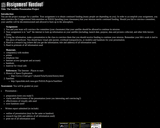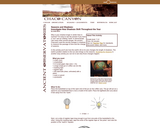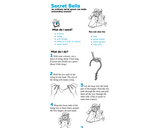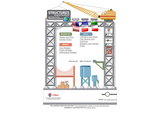
In this activity, students investigate how colored images are formed from small red, green and blue lights.
- Subject:
- Science
- Material Type:
- Activity/Lab
- Provider:
- Exploratorium
- Date Added:
- 09/28/2017

In this activity, students investigate how colored images are formed from small red, green and blue lights.

In this activity, students create a device to demonstrate and investigate one atmosphere of pressure at sea level.

Students will investigate how the pupil changes size to control how much light enters your eye.

Students will conduct research, organize information, and make a presentation on a satellite.

In this activity, students create a scaled slice of the Earth's interior. By measuring, coloring, and labeling their creation, students can see the relative sizes and differences in composition of Earth's internal structures.

Students will learn how Earth's tilt on its axis changes the length of shadows and that the Earth's position relative to the sun also brings us seasons.

Students will investigate how sound reaches the ears by experimenting with metal objects, string, and covering or uncovering their ears. A detailed scientific explanation follows the activity.

In this activity, students make a qualitative conductivity meter with a battery, bulb, and foil.

In this activity, students make a wire spin about a magnet using the interactions of magnetism and electric current.

Students will build bridges and cantilevers with straws to experience many of the basic physics and engineering concepts inherent in structures.

In this activity, students use pieces of candy to represent atoms in chemical equations, with different colors representing different atoms. Conservation of atoms in a chemical equation will be shown by having the same number and kinds of atoms on each side of the equation. One lab partner will use his/her candy to simulate the reactant (left) side of the equation, and the other partner will use his/her candy to simulate the product (right) side.

In this activity, students work collaboratively to create two separate landform models out of clay and a topographic map to match their model. They will then switch maps with another group who will then try to re-create the model based on the map.

In this activity, students use a simple sound oscilloscope (made by teacher) to visualize sounds as vibrations/waves.

In this activity, students investigate the law of conservation of mass.

In this activity, students use balloons to model atomic motion for the states of matter.

This activity helps students visualize the relative size and structural differences between microbes that have the potential to cause disease.

In this kinesthetic activity, students model earthquake waves. They are introduced to the concept of a seismic wave lag and use data from the activity to create a seismic wave travel-time graph.